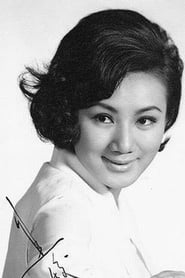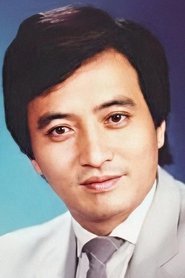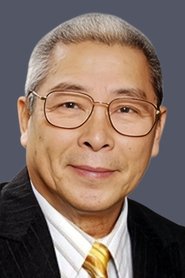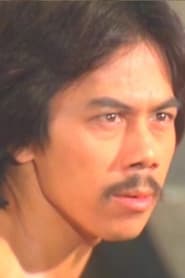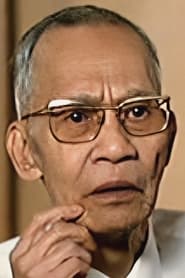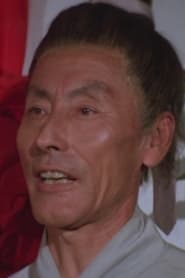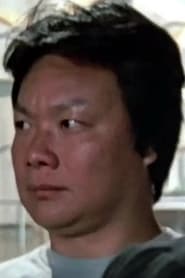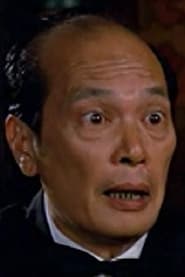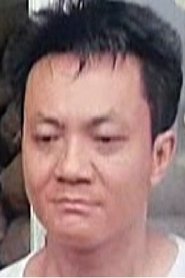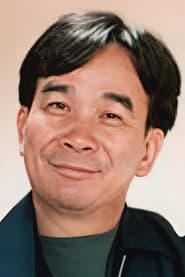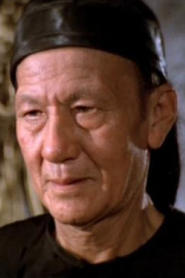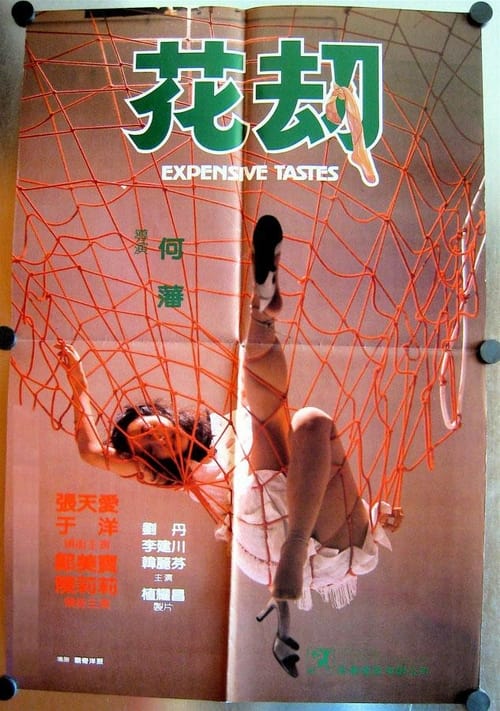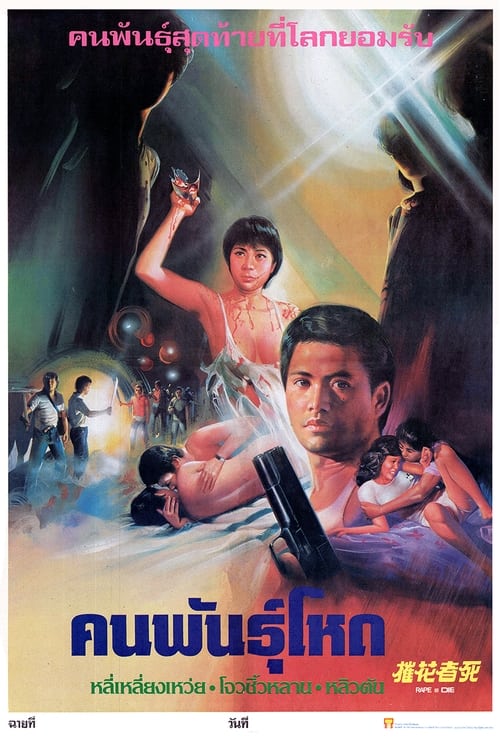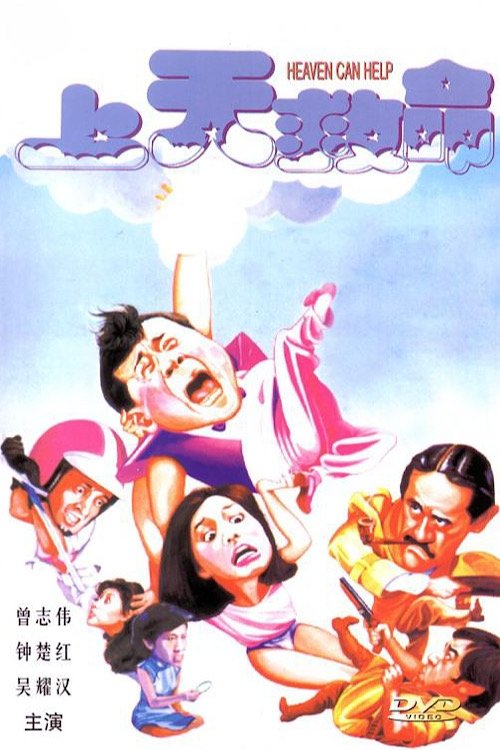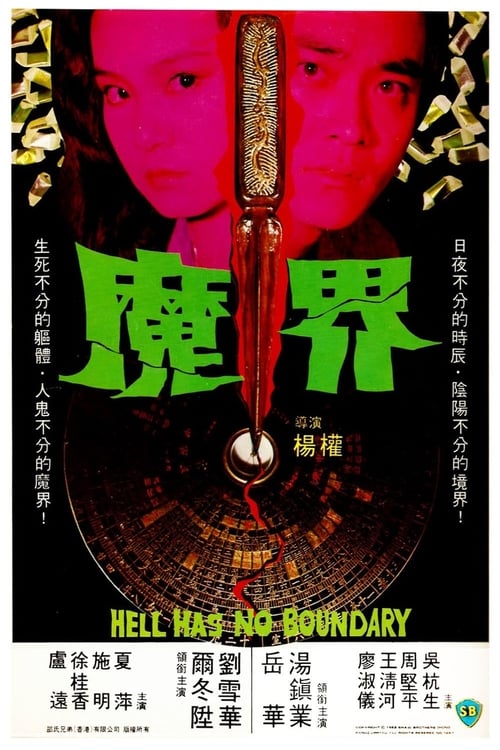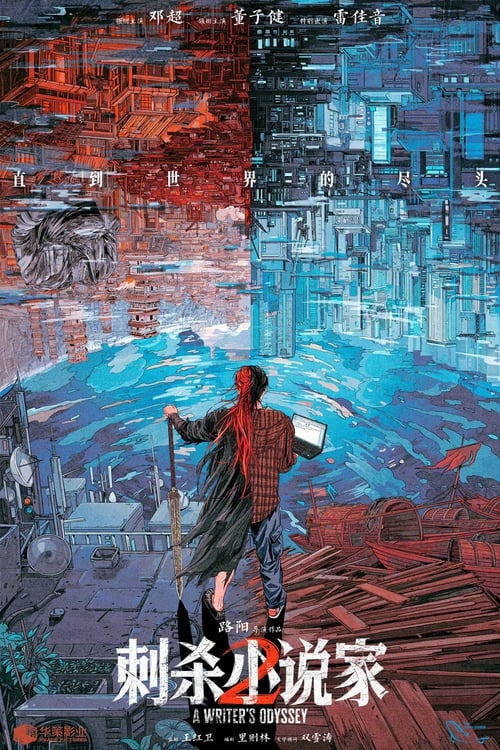
Ask Your Own Question
What is the plot?
Coolie Killer (1982): A Complete Narrative Spoiler
The neon lights of Sai Ying Pun flicker over rain-slicked streets as Ko Tat-fu, a former coolie turned hardened assassin, walks through the shadows of early 1980s Hong Kong. The city is alive with the hum of commerce and crime, but Ko and his four-man team--former laborers who now kill for hire--operate in the margins, invisible to most, feared by those who know their trade. Their base is a nondescript apartment complex, a warren of narrow corridors and stairwells that feels both claustrophobic and safe.
One evening, a mysterious middlewoman arrives, her face half-hidden by a wide-brimmed hat. She offers Ko a contract: two high-ranking members of a local crime family, targets who would require a hit inside Hong Kong. Ko, his voice low and steady, refuses. "I only do hits outside the colony," he tells her, a personal rule that has kept him and his team alive--and his conscience, such as it is, clean. The middlewoman leaves without argument, but her silence is ominous.
Ko's lover, Hung-kam, waits for him in their modest apartment. She is older, world-weary, and deeply concerned for his safety. "You're pushing your luck," she says, her eyes searching his face for any sign of doubt. Ko brushes her off, but the tension between them is palpable. He is a man who has survived by trusting no one, not even those closest to him.
That night, the city's underbelly erupts in violence. Ko's team is attacked--not by one group, but by several, each assassin targeted in a different, almost surreal way. In the apartment complex, one of Ko's men is ambushed by a group of roller-skating killers, their blades flashing as they chase him through the labyrinthine halls. The scene is chaotic, the camera spinning with the skaters as they corner their prey. The assassin fights back, but the attackers' speed and numbers overwhelm him. He falls, blood pooling on the linoleum floor.
On a rain-slicked highway, another team member is riding his motorcycle when a pack of rival bikers swarms him. The attack is sudden and brutal--motorcycles converge from all sides, and the assassin is skewered, his body left broken on the asphalt. The violence is quick, almost impersonal, as if the city itself has turned against them.
At a steamy bathhouse, the third assassin relaxes in a hot tub, unaware of the danger. A beautiful, naked woman--a "sex kitten" in the parlance of the film--slides into the water beside him. For a moment, there is the illusion of intimacy. Then, with a swift, practiced motion, she slits his throat. The water turns red as he slumps forward, betrayed in the one place he thought he was safe.
The fourth assassin meets his end in a parking garage, the concrete walls echoing with the sound of gunfire. He is ambushed, outnumbered, and gunned down in a hail of bullets. His death is as sudden as the others, the camera lingering on his lifeless body as the killers melt back into the shadows.
Ko, meanwhile, is driving through the city when he realizes he is being followed. A high-speed chase ensues, cars careening through narrow streets. Ko's pursuers are relentless, and in a final, desperate maneuver, his car crashes and explodes in a ball of flame. Miraculously, Ko survives, crawling from the wreckage, badly wounded but alive. He is the last of his team, the sole survivor of a coordinated massacre.
Bleeding and disoriented, Ko stumbles into the countryside, far from the neon and noise of Hong Kong. He collapses in a field, the night air cool against his skin. When he wakes, he is in a small, rustic house, his wounds bandaged. A young woman, Tong Ke-yee, watches over him. She is quiet, kind, and curious about this stranger with the haunted eyes. Ko, ever guarded, says little, but her presence is a balm to his pain.
As Ko recovers, he begins to piece together what happened. He asks Hung-kam, his lover, to investigate the ambush, trusting her more than anyone else. But when she returns, her face is pale, her hands shaking. "They're watching us," she whispers. Before Ko can respond, Hung-kam takes her own life, choosing death over betrayal. The loss is a knife to Ko's heart, and his grief hardens into a cold, relentless fury.
Ko's investigations lead him back to the Wa-hing triad, a powerful criminal organization he once served. He suspects that the ambush was a setup, a move in a larger power struggle within the gang. The middlewoman, he realizes, was just a pawn. The real enemy is his former boss, a man who sees Ko and his team as loose ends to be tied up.
Meanwhile, Inspector Chung, a determined cop with a reputation for honesty, is closing in. He has been tracking the assassins' activities for months, and now, with Ko as the last man standing, the hunt intensifies. Chung is a complex figure--he believes in the law, but he also understands the moral ambiguity of Hong Kong's underworld. As he follows Ko's trail, he begins to see the bigger picture: this is not just about catching a killer, but about uncovering the corruption that runs deep in the city's veins.
Ko, his body healing but his soul scarred, prepares for his final confrontation. He arms himself, his movements precise, his mind focused. He returns to Hong Kong, the city that birthed and betrayed him. The shipping company he uses as a front is empty, the desks gathering dust. He knows his enemies are watching, waiting for him to make a mistake.
The climax unfolds in a series of brutal, expertly staged shootouts. Ko moves through the city like a ghost, picking off his enemies one by one. In a plush office foyer, he is ambushed by a team of knife-wielding assassins on roller skates--a surreal, almost dreamlike sequence that turns the circular lobby into a deadly arena. Ko fights back with a ferocity born of desperation, his guns blazing, his body a whirlwind of motion. The assassins fall, their bodies littering the marble floor.
The final confrontation takes place in a dimly lit warehouse, the air thick with the smell of gunpowder and blood. Ko faces his former boss, the man who ordered the hit on his team. The two men circle each other, their eyes locked, their hatred palpable. "You betrayed your own," Ko says, his voice a whisper. The boss sneers, "This is the life we chose." The shootout is vicious, the gunfire echoing off the concrete walls. Ko, firing a gun in each hand in a style that would later become iconic, takes down his enemy in a hail of bullets.
Inspector Chung arrives as the smoke clears. He could arrest Ko, but he hesitates. He sees the bodies, the carnage, and the man who caused it--a killer, yes, but also a victim of the very system Chung is sworn to uphold. For a long moment, the two men stare at each other, the weight of the city's corruption between them. Then, silently, Chung turns and walks away, allowing Ko to slip back into the shadows.
Ko, his revenge complete, returns to the countryside. Tong Ke-yee is waiting, her face a mixture of relief and sorrow. Ko says nothing, but his eyes speak volumes. He has survived, but at what cost? The film ends with Ko standing at the edge of a field, the sun rising over the hills. The city is behind him, but its ghosts will never leave. The final image is of a man alone, his past a burden, his future uncertain.
Character Fates
- Ko Tat-fu (Charlie Chin): Survives, exacts revenge, and retreats to the countryside, emotionally scarred but alive.
- Hung-kam (Lisa Chiao Chiao): Commits suicide after being pressured to betray Ko.
- Tong Ke-yee (Cecilia Yip): Survives, having nursed Ko back to health; her future with him is left ambiguous.
- Inspector Chung (Yueh Hua): Allows Ko to escape, recognizing the moral complexity of the situation.
- Ko's Team Members (unnamed): All killed in the initial ambush--one by roller-skating assassins, one by motorcyclists, one by a bathhouse assassin, and one in a parking garage ambush.
- Middlewoman (unnamed): Her fate is left unresolved, her role in the conspiracy never fully revealed.
- Wa-hing Triad Boss: Killed by Ko in the final confrontation.
Major Plot Revelations and Twists
- The ambush is a setup by Ko's former triad boss, a power play to eliminate loose ends.
- Hung-kam's suicide reveals the depth of her loyalty and the pressure she was under.
- Inspector Chung's decision to let Ko go underscores the film's theme of moral ambiguity.
- Ko's refusal to kill in Hong Kong--a point of honor--ironically leads to the deaths of his team.
- The middlewoman's true motives remain a mystery, adding to the film's atmosphere of paranoia and betrayal.
Visual and Emotional Moments
- The roller-skating assassins' attack is a surreal, kinetic sequence, the camera spinning with the killers as they hunt their prey.
- Hung-kam's suicide is shot in close-up, her face a mask of sorrow and resolve.
- Ko's recovery in the countryside is a quiet, almost pastoral interlude, the calm before the storm.
- The final shootout is a ballet of violence, Ko moving through the warehouse like a man possessed, his guns blazing.
- The last scene, with Ko standing alone in the dawn light, is a powerful image of isolation and survival.
Key Dialogue
- Ko: "I only do hits outside the colony." (Establishes his moral code and sets the plot in motion.)
- Hung-kam: "You're pushing your luck." (A warning that goes unheeded.)
- Hung-kam (before her suicide): "They're watching us." (A line heavy with dread.)
- Ko (to his former boss): "You betrayed your own." (A condemnation and a vow of vengeance.)
- Boss: "This is the life we chose." (A cynical acknowledgment of their shared fate.)
Locations and Times
- Sai Ying Pun District, Hong Kong (urban setting, team's base, initial ambush)
- Apartment Complex (roller-skating assassins' attack)
- Highway (motorcycle gang ambush)
- Bathhouse (sex kitten assassination)
- Parking Garage (fourth team member's death)
- Countryside (Ko's recovery, refuge with Tong Ke-yee)
- Shipping Company (Ko's cover, final preparations)
- Warehouse (climactic confrontation)
Conclusion
"Coolie Killer" is a gritty, relentless thriller that explores loyalty, betrayal, and the cost of violence. Ko Tat-fu's journey from coolie to killer to avenger is a descent into a world where honor is a liability and survival is the only victory. The film's action is brutal and inventive, its characters morally ambiguous, and its ending bittersweet. In the final moments, Ko stands alone, a man who has lost everything but his life, staring into a future as uncertain as the city he has left behind.
What is the ending?
In the ending of "Coolie Killer," the protagonist, a coolie named Raju, confronts the antagonist, a ruthless gangster named Shankar. After a series of intense confrontations, Raju ultimately defeats Shankar, leading to a resolution of the conflict. Raju's victory symbolizes the triumph of good over evil, and he is left to reflect on his journey and the sacrifices made along the way.
As the climax of "Coolie Killer" unfolds, the tension escalates dramatically. Raju, having endured numerous trials and tribulations, finds himself in a final showdown with Shankar. The scene is set in a dimly lit warehouse, filled with the remnants of past battles--broken crates, scattered debris, and the echoes of their previous confrontations. Raju, weary yet determined, steps forward, his heart pounding with a mix of fear and resolve.
Shankar, exuding menace, stands at the center of the warehouse, flanked by his henchmen. The atmosphere is thick with anticipation as Raju confronts him, fueled by the memories of his fallen comrades and the injustices he has witnessed. The dialogue is sharp, filled with tension as Raju accuses Shankar of his crimes, his voice steady despite the fear coursing through him.
The fight that ensues is brutal and raw. Raju, using his agility and street smarts, dodges Shankar's powerful blows. The choreography of the fight is visceral, showcasing Raju's desperation and determination to protect his community. Each punch thrown and each kick landed is a testament to Raju's resolve to end Shankar's reign of terror.
As the battle rages on, Raju's internal struggle becomes evident. He is not just fighting for his own survival but for the lives of those who have suffered under Shankar's tyranny. The emotional weight of his journey culminates in this moment, where every sacrifice he has made fuels his strength.
In a pivotal moment, Raju manages to outsmart Shankar, using the environment to his advantage. He traps Shankar in a precarious position, and with one final, powerful blow, he defeats the gangster. The warehouse falls silent, the echoes of their fight fading into the background. Raju stands over Shankar, breathing heavily, a mix of relief and sorrow washing over him. He knows that while he has won this battle, the scars of the conflict will remain.
As the dust settles, Raju is left to reflect on the cost of his victory. The camera pans out, revealing the aftermath of the fight--broken bodies, the remnants of a struggle for justice. Raju's expression is one of somber triumph; he has avenged his friends and liberated his community, but at what cost? The weight of his actions hangs heavy on him.
In the final scenes, Raju walks away from the warehouse, the sun rising in the distance, symbolizing a new beginning. He is joined by the remaining coolies, who look to him with gratitude and respect. They understand that their lives will not be the same, but they are hopeful for a future free from fear. Raju's fate is one of leadership; he has become a symbol of resilience and strength for his community.
The film closes with a poignant reminder of the struggles faced by the marginalized, highlighting the importance of standing up against oppression. Raju's journey is a testament to the power of courage and the enduring spirit of those who fight for justice.
Is there a post-credit scene?
The movie "Coolie Killer," produced in 1982, does not feature a post-credit scene. The film concludes its narrative without any additional scenes or content after the credits roll. The story wraps up with the resolution of the main plot, focusing on the protagonist's journey and the conflicts faced throughout the film. As such, viewers are left with the finality of the story without any further revelations or additional scenes to explore.
Who is the main character in Coolie Killer and what motivates his actions throughout the film?
The main character in Coolie Killer is a coolie named Shankar, portrayed by the actor. Shankar is driven by a deep sense of injustice and a desire for revenge against those who have wronged him and his community. His motivations are rooted in personal loss and the exploitation he faces as a laborer, which fuels his transformation into a vigilante.
What role does the character of the corrupt politician play in the story?
The corrupt politician in Coolie Killer serves as the primary antagonist, representing the systemic oppression faced by the working class. His actions directly lead to the suffering of Shankar and his fellow coolies, as he exploits their labor for personal gain. This character's greed and moral depravity heighten the stakes for Shankar, pushing him further down the path of vengeance.
How does Shankar's relationship with his fellow coolies evolve throughout the film?
Shankar's relationship with his fellow coolies evolves from one of camaraderie to a more complex dynamic as he becomes a leader in their fight against oppression. Initially, they share a bond of mutual struggle, but as Shankar takes on the role of a vigilante, some coolies are inspired by his actions while others fear the consequences of his violent path. This tension reflects the broader themes of loyalty and sacrifice.
What significant event triggers Shankar's transformation into the Coolie Killer?
The significant event that triggers Shankar's transformation into the Coolie Killer is the brutal attack on his friend and fellow coolie, which results in severe injury and humiliation. This incident serves as a catalyst for Shankar, igniting his rage and sense of justice, compelling him to take matters into his own hands and seek revenge against those responsible.
How does the film depict the struggles of the coolies in their daily lives?
Coolie Killer vividly depicts the struggles of the coolies through various scenes showcasing their grueling labor, exploitation, and the harsh realities of their existence. The film portrays their long hours of work, the meager wages they receive, and the constant threat of violence from both employers and corrupt officials. These elements create a poignant backdrop that highlights their resilience and the dire need for change.
Is this family friendly?
"Coolie Killer," produced in 1982, is not considered family-friendly due to several potentially objectionable elements. The film contains scenes of violence, including physical confrontations and the portrayal of crime, which may be upsetting for children or sensitive viewers. Additionally, there are themes of revenge and betrayal that could be emotionally intense. The film also includes moments of tension and suspense that might be frightening for younger audiences. Overall, the mature themes and graphic content make it more suitable for adult viewers.








